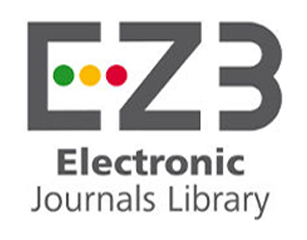MAXIMUM ALLOWABLE RISK IN DECISION MAKING PROCESS
Keywords:
decision-making process, maximum permissible risk, minimax criteria, an algorithm to lead the system with a maximum permissible risk, leadership of the systemAbstract
In the article it is analyzed the opportunity to lead the system with maximum permissible risk, as a part of the chain of interrelated notions: goals, ways, means, and risk; it is determined, that risk-taking increases the adaptability of the system, opens the system for innovations, allows achieving established goals by less means and more simple ways; it is stated that location in the sensitive framework of stepwise of taking of maximum permissible risk, according to the minimax criteria, makes the system secure; it is argued that maximum permissible risk in decision-making process reduces the overall risk of system functionality; it is proposed the algorithm to lead the system with a maximum permissible risk as a theoretical and practical model to lead the system effectively.
References
Bernoulli D. (1954), “Exposition of a New Theory on the Measurement of Risk,” Econometrica. — Vol. 22. — P. 23–24.
Bernshtein, Peter L. (1996), Against the Gods. The remarkable Story of Risk, John Wiley & Sons, Inc, NY, p. 8.
Copeland, A. H. (1945), Review: Theory of Games and Economic Behavior by John von Neumann and Oskar Morgenstern, Bull. Amer. Math. Soc. 51 (07): 498–504, p. 498.
Finucane M., Alhakami A., Slovic P. And Johnson S. (2000), “The Affect Heuristicin Judgments of Risks and Benefits” // Journal of Behavioral Decision Making. — Vol. 13. — № 1. — P. 14.
Fischhoff, B. (1995). Risk perception and communication unplugged: Twenty years of process. Risk Analysis, 15, p. 141.
Kahneman, D. and Tversky, A. (1979), “Prospect Theory: An Analysis of Decision under Risk”, Econometrica. — Vol. 47. — № 2. — Р. 263.
Kahneman, D. (2011), Thinking, Fast and Slow, Farrar, Straus and Giroux. — New York. — Р. 197.
Maslov, Abraham H. (1970), Motivation and personality. — 2-nd ed. — New York: Harper and Row.
Naplyokov, Yuriy, V. (2011), “Increasing unit effectiveness in a dynamic environment by implementing a leadership mathematical model”. Master‘s Thesis, U.S. Army Command and General Staff College, CARL, Fort Leavenworth, KS 66027-2301. — USA. — Р. 72.
Naplyokov, Yuriy, V. (2014), “An Algorithm for Maintaining Dynamic Equilibrium to Achieve Strategic Goals”. Master’s Thesis, U.S. Army War College, Carlisle Barracks, Pennsylvania 17013. — USA. — Р.9.
Nash, John. (1950), Non-Cooperative Games, Annals of Mathematics. — Vol. 54. — № 2. — September 1951. — Р. 286.
Neumann, John von and Morgenstern, Oskar (1953), Theory of Games and Economic Behavior. Princeton, NJ. Princeton University Press.
Sandman, P., Covello, V, & Slovic, P. (1988), Risk communication, risk statistics, and risk comparisons: A manual for plant managers, Washington, DC: Chemical Manufacturers Association.
Senge, Peter M., (1990), revised 2006. The Fifth Discipline: The Art & Practice of The Learning Organization, New York: Doubleday. — Р. 3.











